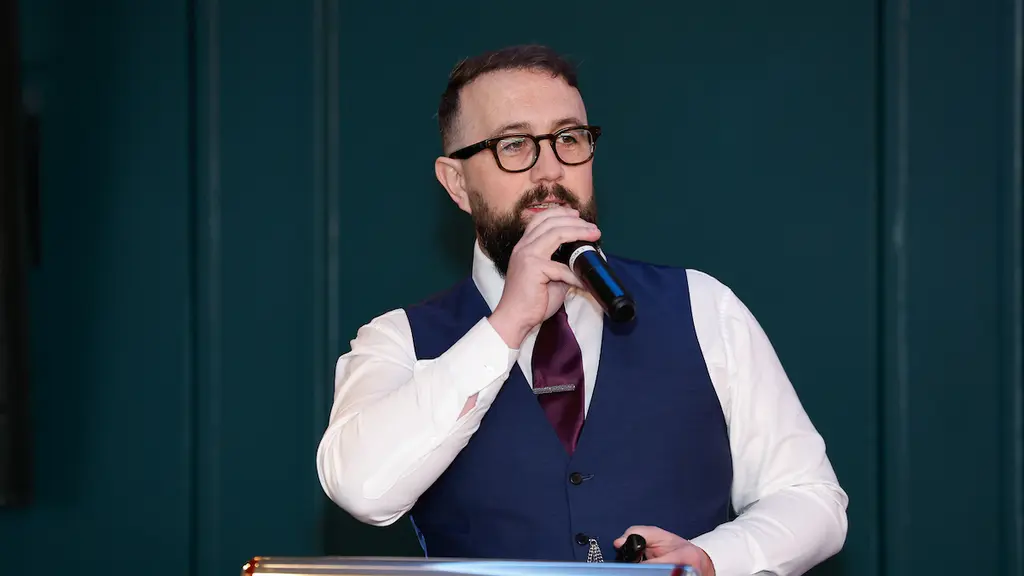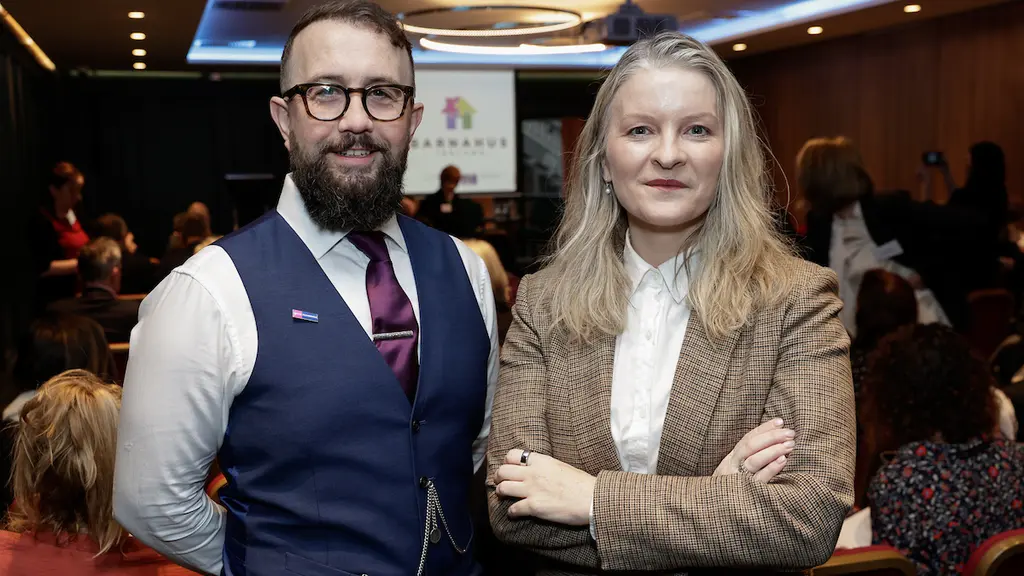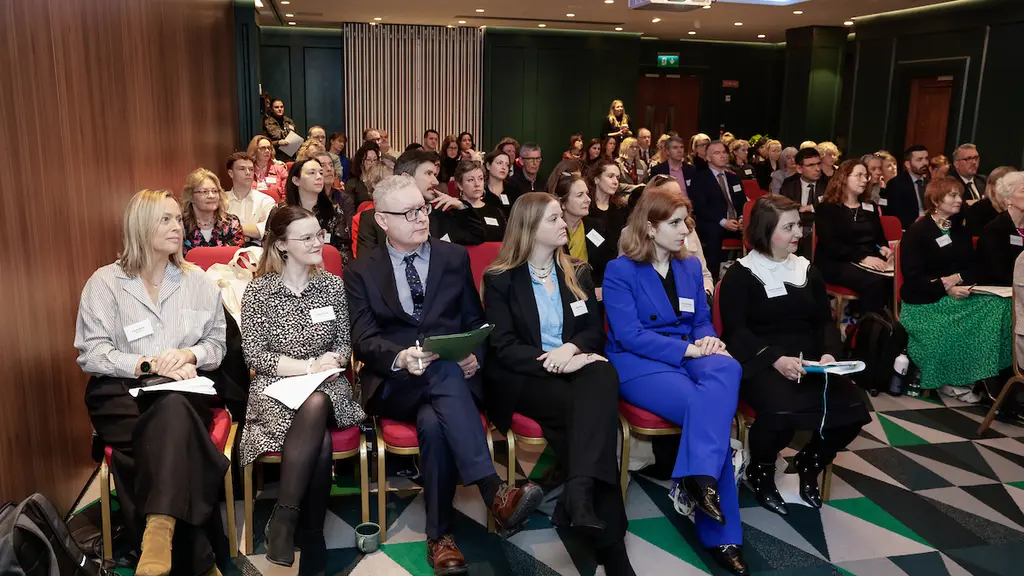
“Barnahus” meaning “Children’s house” is rapidly becoming the one word in Icelandic that most people know. An innovative, child-friendly justice model, it was conceived in Reykjavik almost three decades ago. Now, thankfully, it is spreading across the world.
With its expansion comes adaptation. You cannot simply transplant an entire justice system into a foreign jurisdiction. But the core principles of this unique multiagency interdisciplinary response are so integral, the consequences of even the slightest “tweak” could possibly, over time, alter the entire trajectory of the system. Which is why the creators of Barnahus have decided to establish new international standards, to clarify every essential detail of this excellent instrument to address childhood sexual violence.
As a survivor myself, from a time before Barnahus existed, I am often invited to speak when governments gather to discuss creating one. Last month, Ireland held an event to celebrate the launch of three new Barnahuses. After offering my sincere congratulations to the Irish Government for their initiative to support child victims and witnesses of crime, I just had one question for them: “What was the point?”
Why had they gone to such lengths? The EU and Council of Europe had joined forces with hundreds of Irish professionals, spending thousands of man-hours and millions of taxpayers money to establish not one but three Barnahuses. Why?



A few weeks prior to this, I was in Iceland contributing to the creation of these new international Barnahus standards. With twenty nations represented in the room, by over sixty professionals from Justice Ministries, the UN, Europol and staff of similar such facilities across the world, it yet seemed difficult for everyone to simply agree on the purpose of a Barnahus.
If you asked the Magistrate from Portugal “What is the point of a Barnahus?” You’d get a slightly different answer than if you asked the director of the Child Advocacy Centre in Alabama. Multidisciplinary interagency response models are a beautiful idea, bringing all the crucial aspects of the process to the child victim under one roof, but each agency, be it medical, law enforcement, judiciary, therapeutic, are all still just there to carefully extract, as sensitively as possible, whatever their department needs from the child. What does the child need? If you’d asked me, back in 1993, when I was 11, what the point of a Barnahus is, what would I have said?
Of course, my government (Scotland) is not responsible for what my abusers did to me, but every nation is responsible for how they deliver justice to its own children who have suffered sexual violence.
"Police stations are for criminals - they are no place for a child. Courtrooms are for lawyers - they are no place for a child. Hospitals are for people who need chemotherapy, not children who have been sexually traumatised."
For a growing number of child victims, there is progress. From the moment a child enters the Barnahus they can sense the warm supportive atmosphere of safety and dignity. The necessary medical examination is conducted by highly sophisticated technology, designed to be brief and painless and unintrusive. Often within just hours of a disclosure, the child can see their authorities taking action on their behalf. The child feels cared for, and so they begin to learn that they have value in this world, because they witness that they are someone worth fighting for. The interview process happens only once, and the child feels believed.
"Believed. I cannot express how profoundly transformative this one kindness is."
Their filmed testimony now becomes evidence in chief, so the young victim is freed from the ominous legal proceedings, for that is the domain of adults, of criminal law professionals. The child is immediately embraced by the holistic healing services, where they can breathe, or weep or rage or just be alone in a safe space where they cannot hurt themselves, where kind people stay close by, who they can talk to if they feel ready.
Just as humanity developed chemotherapy and governments do not say “We know chemo is the best way to tackle cancer in other countries but that’s just not how we do things here”, humanity has developed the Barnahus. All nations should be using it. I am not suggesting that if Scotland had a Barnahus thirty years ago, we would have definitely secured a conviction in my case and I’d instantly have been okay again, but I truly believe that if anything even remotely like it had existed, it would not have taken me over twenty years of struggle, therapy and overcoming addiction to drag myself back into something resembling a normal healthy life.
Let’s be under no delusions. For every child that comes through a Barnahus door, something they could not even have imagined has already been done to them. Their own body has been invaded, and since that moment their whole world has collapsed. Now their very childhood has been irreparably interrupted. No measures we put in place can truly undo any of this. “Child-friendly justice” is such an odd phrase. Essentially, it doesn't really matter what colour we paint the walls, or how many cosy sofas we install, there is no part of this process that a child finds “friendly”. They would rather be anywhere else doing anything else, and all they want is for everything to go back to how things were before any of this. The moment before their rights were so gravely violated.
It’s taken me a few decades but I can really see it now, the point of a Barnahus, and it’s purely a matter of rights. Bragi Guðbrandsson, creator of Barnahus, describes it as “the practical application of the United Nations Convention on the Rights of the Child”.
"But children’s rights are only utopian ideals on paper unless we all fully and always embody them in every interaction with the child."
However, “We hold these truths to be self-evident, that all men are created equal, endowed by their creator with certain unalienable rights”. The American Declaration of Independence, inspired by an even older Scottish document, ‘The Declaration of Arbroath’, is significant because it does not say ‘endowed by their government’, and it doesn’t matter whether you believe in a “Creator” or not. The declaration asserts that our rights exist simply because we exist. In the same way animals have rights, and even our environment. Our authorities' role then is not to bestow our rights upon us, but merely to ensure that they are upheld. Over one hundred years ago, women marched for their right to vote. Sixty years ago, black Americans marched for their equal rights. Fifty years ago, gay people began to march for their rights. Today, children who have already been sexually assaulted are dragged through lengthy retraumatizing legal processes that often lead nowhere. Why do we do that to them? Who are we serving? I think it’s time the children all got together and marched for their rights. They won’t. They can’t. They’re children.
"Children, because they are children, cannot defend their rights. It's up to us. It’s our responsibility to ensure their rights are upheld."
I don’t mean ‘us’ as advocates or staff or whatever professional position you may hold. I mean it’s up to us, the adults, every single person reading this, to do everything within our power to see children’s rights are upheld and a key tool in this fight is Barnahus, because it is the most effective way to help these wounded little ones find the way back to their path, towards the future that was stolen from them. That’s the whole point.
More like this

The case for national survivor councils in the fight against child sexual abuse
Survivor councils are more than advisory panels. They are the compass guiding the direction of policy, ensuring that reforms are not just well-intentioned but rooted in the realities of those affected. It’s time to stop seeing survivors of childhood sexual violence as the aftermath and start seeing them as the architects of a new future, where very child is free from violence and thriving.

Give survivors a political voice!
I was five when I was raped by an adult cousin during a summer stay at my great aunt’s home in Southwest France. My parents were away. I couldn’t resist. I had no agency.

Brave UK open letter on Makin Review into Church of England
We know the Church of England spent decades protecting a serial child abuser within its ranks.

Brave Movement calls on the EU to urgently pass robust legislation on child sexual abuse prevention and response
Childhood sexual exploitation and abuse (CSEA) affects at least one in five girls and one in ten boys across socio-economic backgrounds.

Brave Movement statement on the historic EU legislation
“The Brave Movement strongly backs the draft legislation to end childhood sexual violence announced today by the European Commission under the leadership of the EU Commissioner for Home Affairs.
Stay informed
Sign up to the Brave Movement monthly newsletter to stay up-to-date on our efforts and learn more about how YOU can take action.
Thank you for being brave!